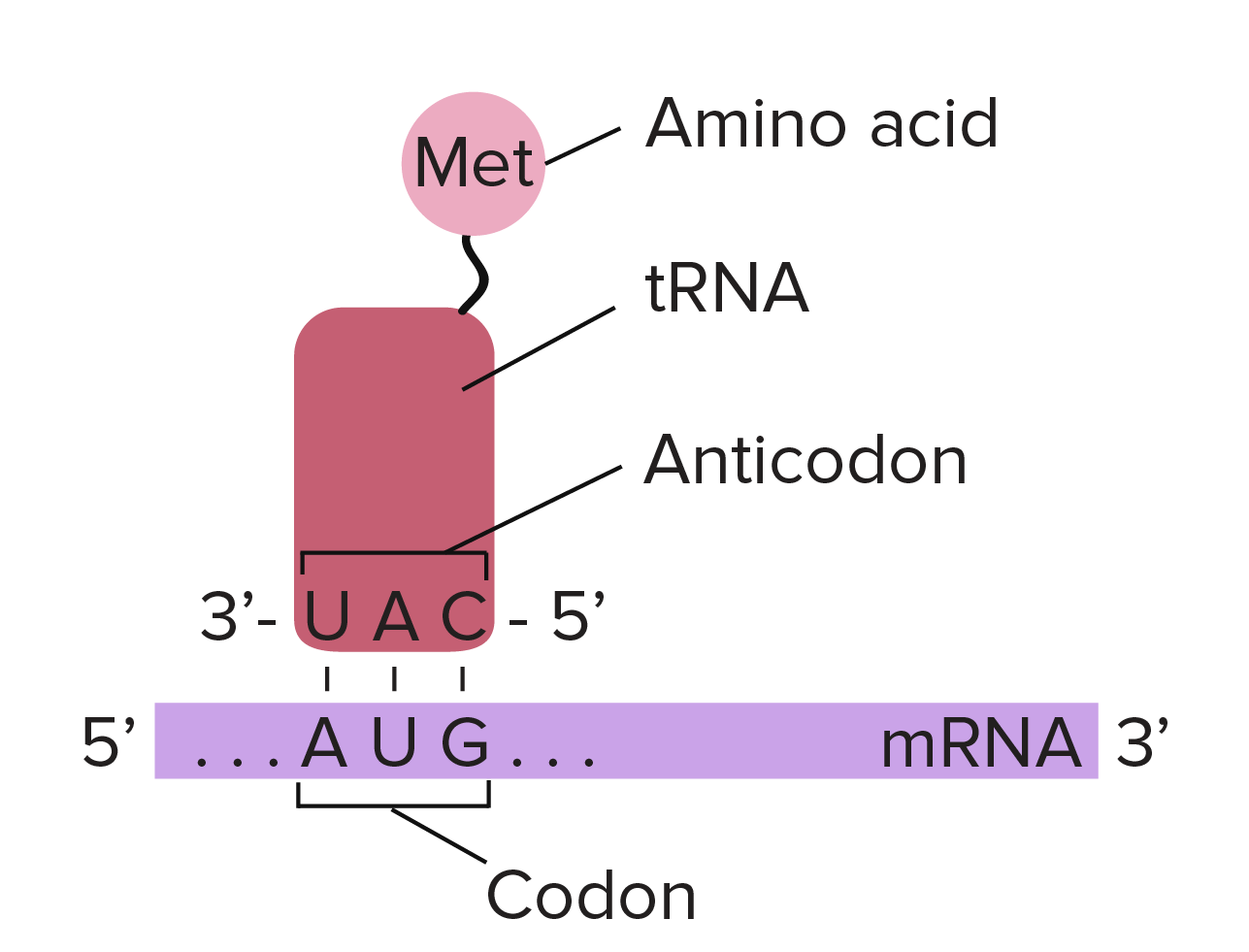6.3 Transcription and RNA Processing
1/5
Earn XP
Description and Tags
Heritable information provides for continuity of life. Describe the mechanisms by which genetic information flows from DNA to RNA to protein. The sequence of the RNA bases, together with the structure of the RNA molecule, determines RNA function-- mRNA molecules carry information from DNA to the ribosome. Distinct tRNA molecules bind specific amino acids and have anti-codon sequences that base pair with the mRNA. tRNA is recruited to the ribosome during translation to generate the primary peptide sequence based on the mRNA sequence. rRNA molecules are functional building blocks of ribosomes. Genetic information flows from a sequence of nucleotides in DNA to a sequence of bases in an mRNA molecule to a sequence of amino acids in a protein. RNA polymerases use a single template strand of DNA to direct the inclusion of bases in the newly formed RNA molecule. This process is known as transcription. The DNA strand acting as the template strand is also referred to as the noncoding strand, minus strand, or antisense strand. Selection of which DNA strand serves as the template strand depends on the gene being transcribed. The enzyme RNA polymerase synthesizes mRNA molecules in the 5' to 3' direction by reading the template DNA strand in the 3' to 5' direction. In eukaryotic cells the mRNA transcript undergoes a series of enzyme-regulated modifications-- Addition of a poly-A tail. Addition of a GTP cap. Excision of introns and splicing and retention of exons. Excision of introns and splicing and retention of exons can generate different versions of the resulting mRNA molecule; this is known as alternative splicing.
Name | Mastery | Learn | Test | Matching | Spaced |
|---|
No study sessions yet.
6 Terms
mRNA (messenger RNA)
temporary RNA version of DN “recipe” made in transcription
genetic information passes from nucleotides in DNA to bases in RNA to amino acids in protein
nucleotides on mRNA read in triplets (codons), each becomes a particular amino acid
rRNA (ribosomal RNA)
combines with proteins to form ribosomes, helps with translation
tRNA (transfer RNA)
transfers amino acids into polypeptide chain during synthesis
tRNAs include anticodons, sequences that base pair with a specific codon

transcription
synthesis of RNA, occurring in the nucleus
RNA polymerase binds upstream from the start at promoter, unwinding DNA and elongating an RNA strand trailing off from it until termination
DNA acts as a template strand (noncoding strand, minus strand, antisense strand), determines gene being transcribed
synthesis of RNA occurs in 5’ to 3’ direction, DNA is read in 3’ to 5’ direction
pre-mRNA transcript modifications in eukaryotic cells
Poly-A tail formed at 3’ end and GTP cap added on 5’ end; enabling mRNA transport, protection from enzymes, and attachment to ribosomes
spliceosome cuts out (excises) introns and joins (retains) exons to become mature mRNA
alternative splicing
variation in splicing can generate different version of the resulting mRNA